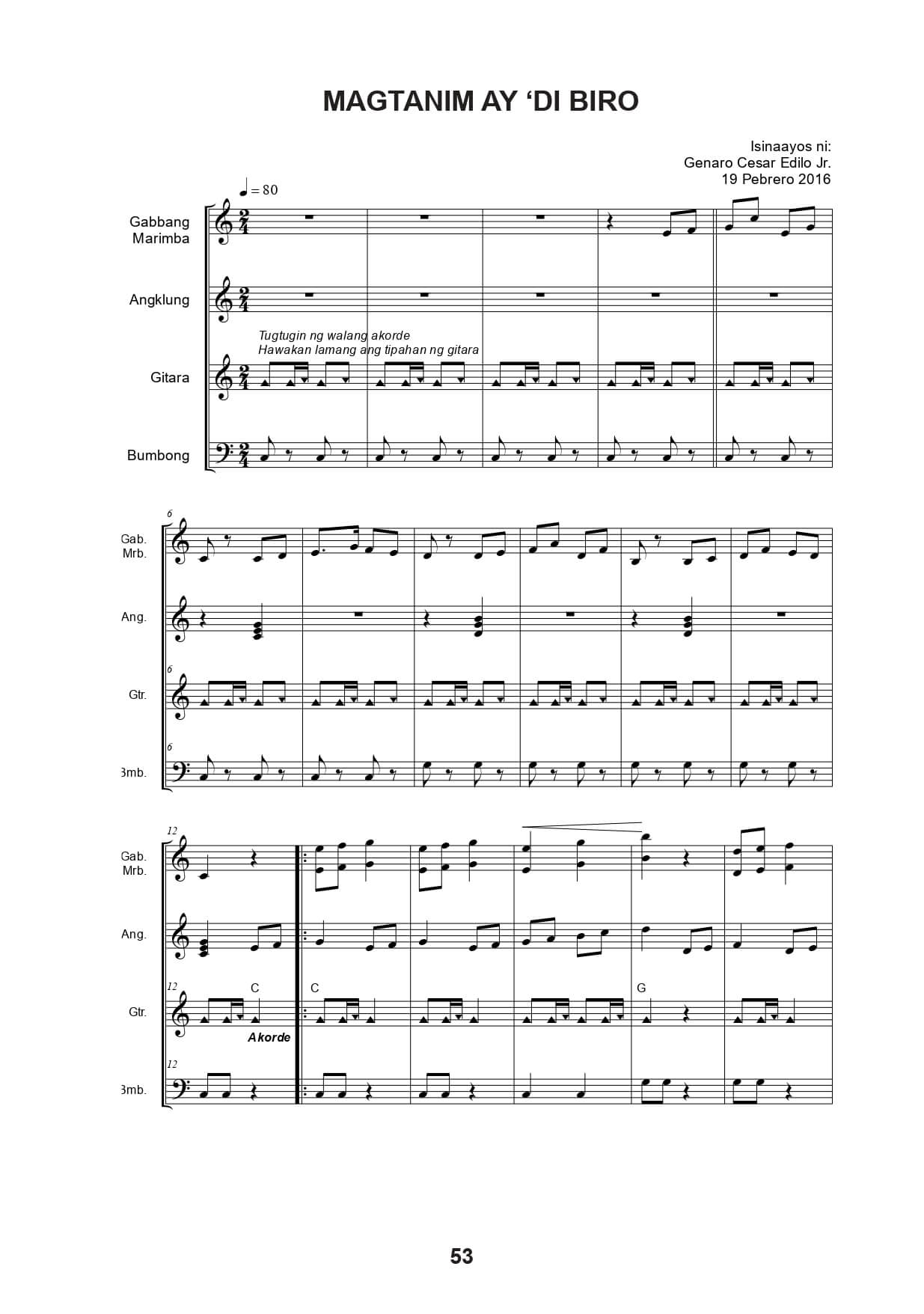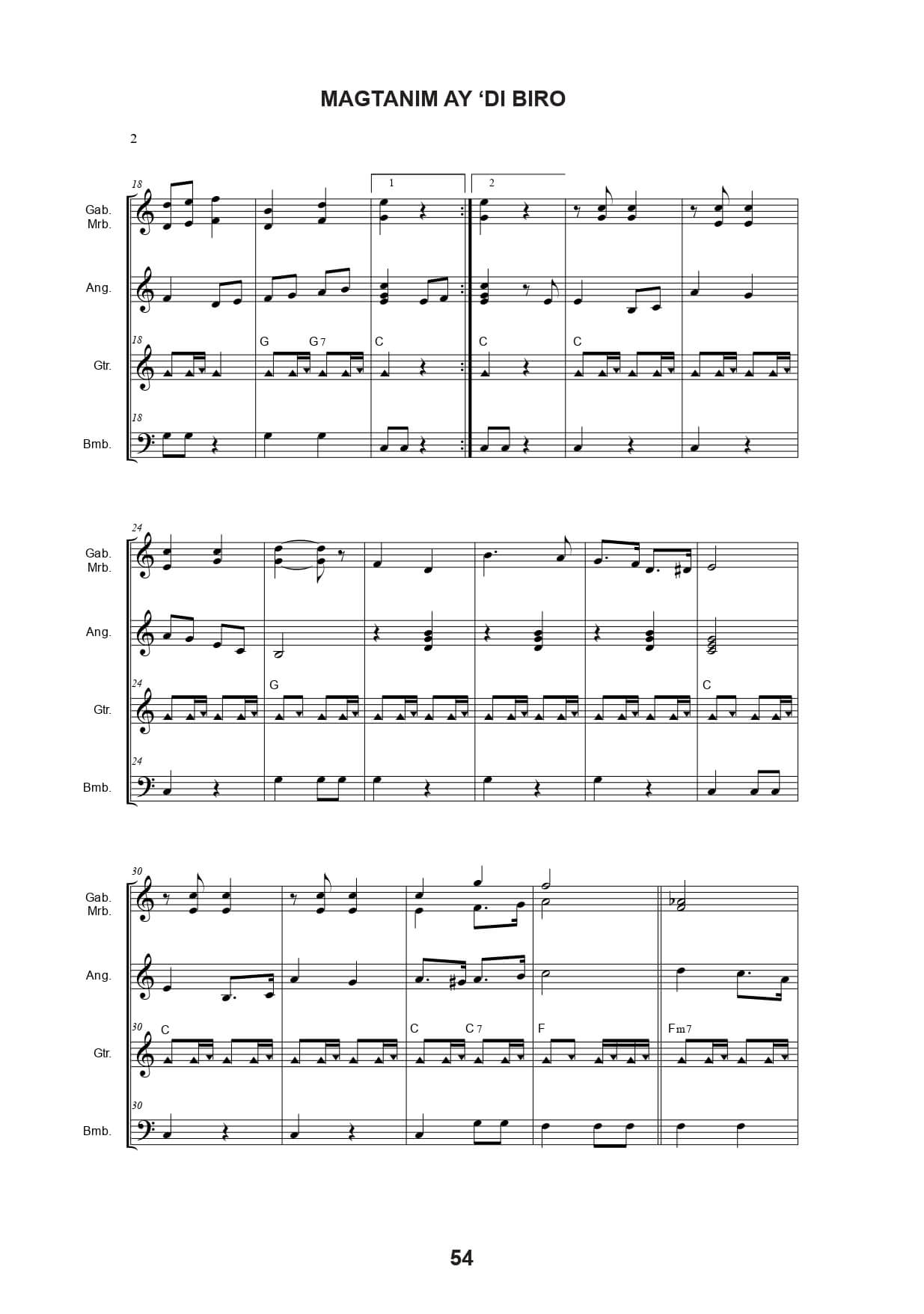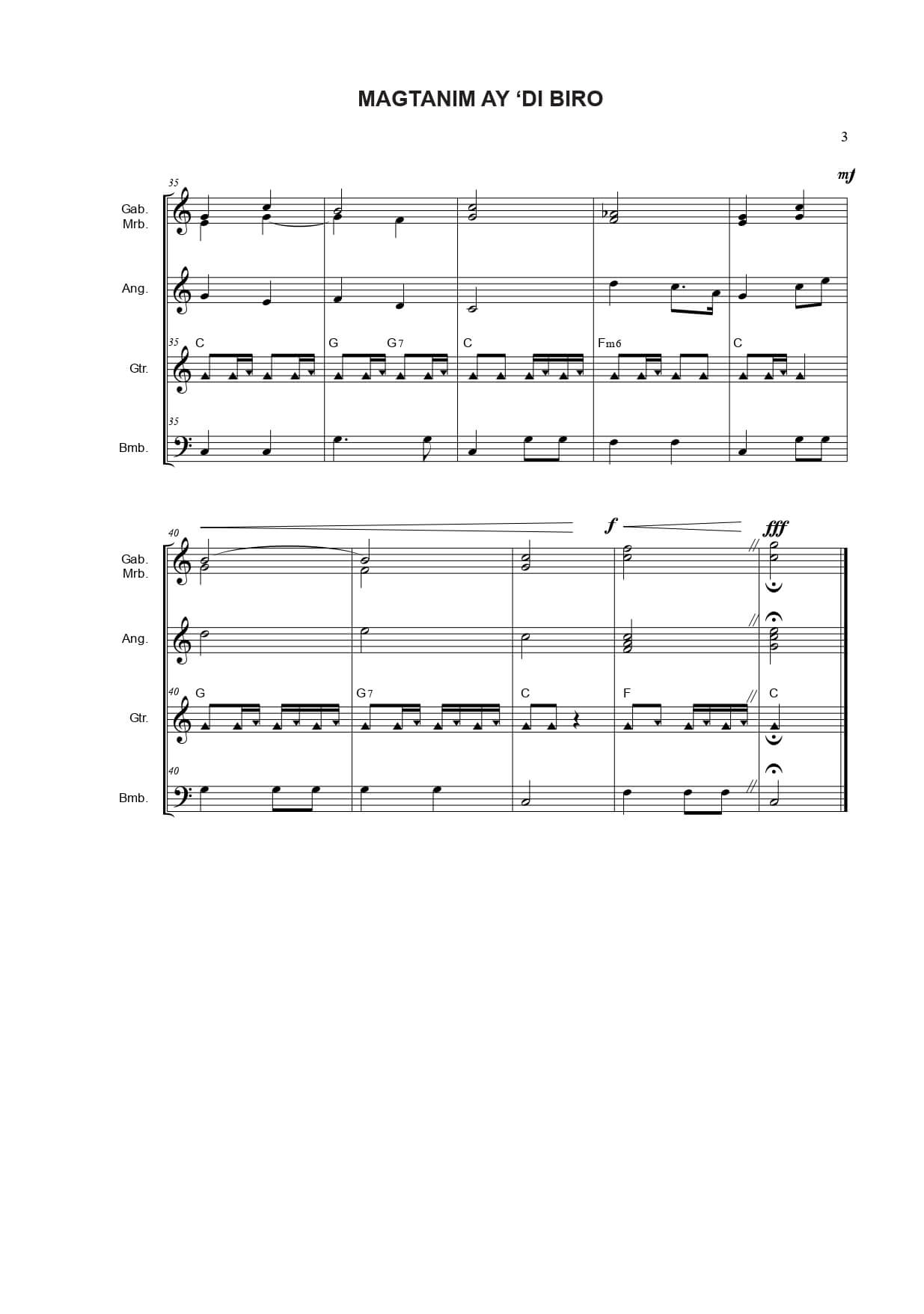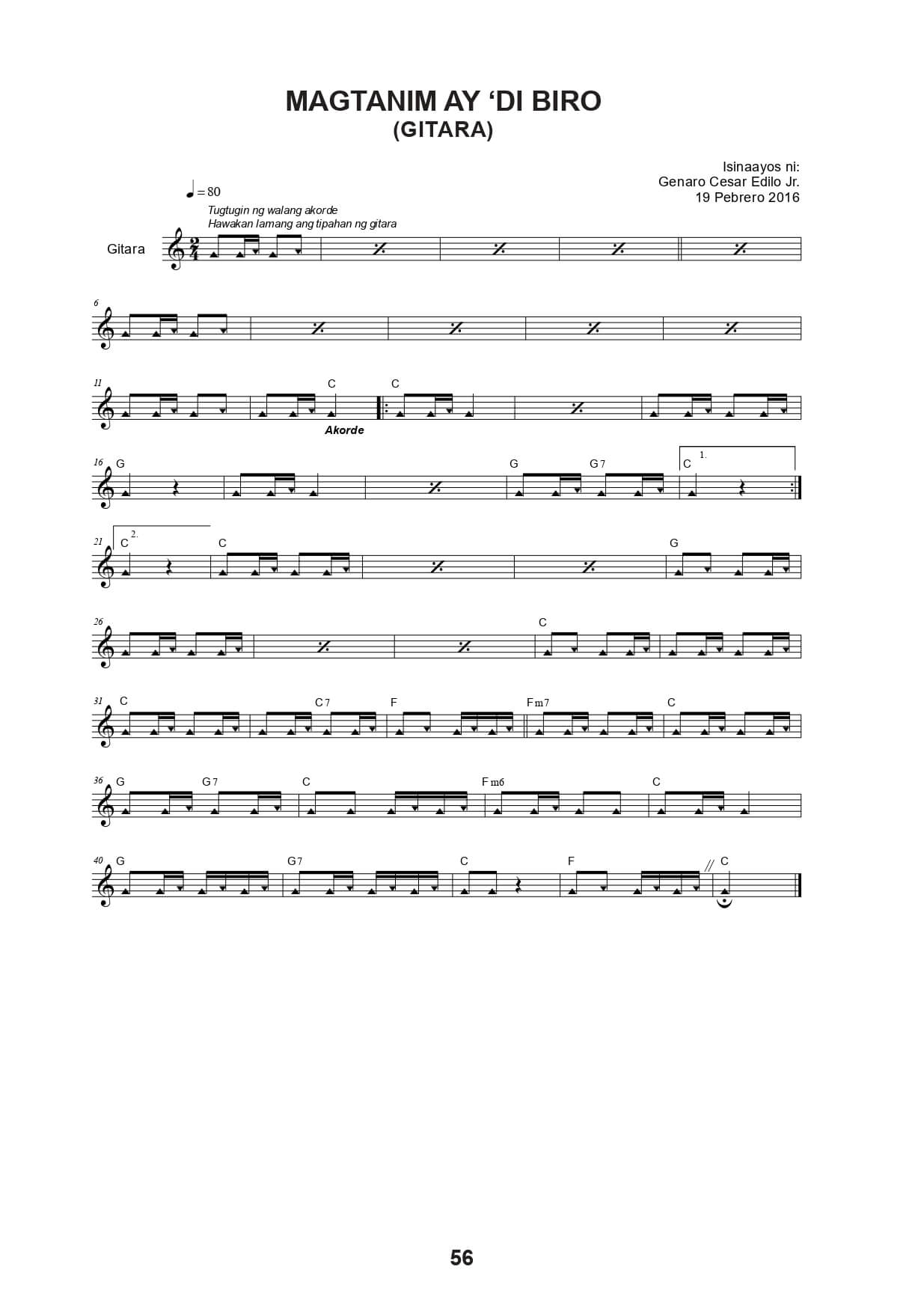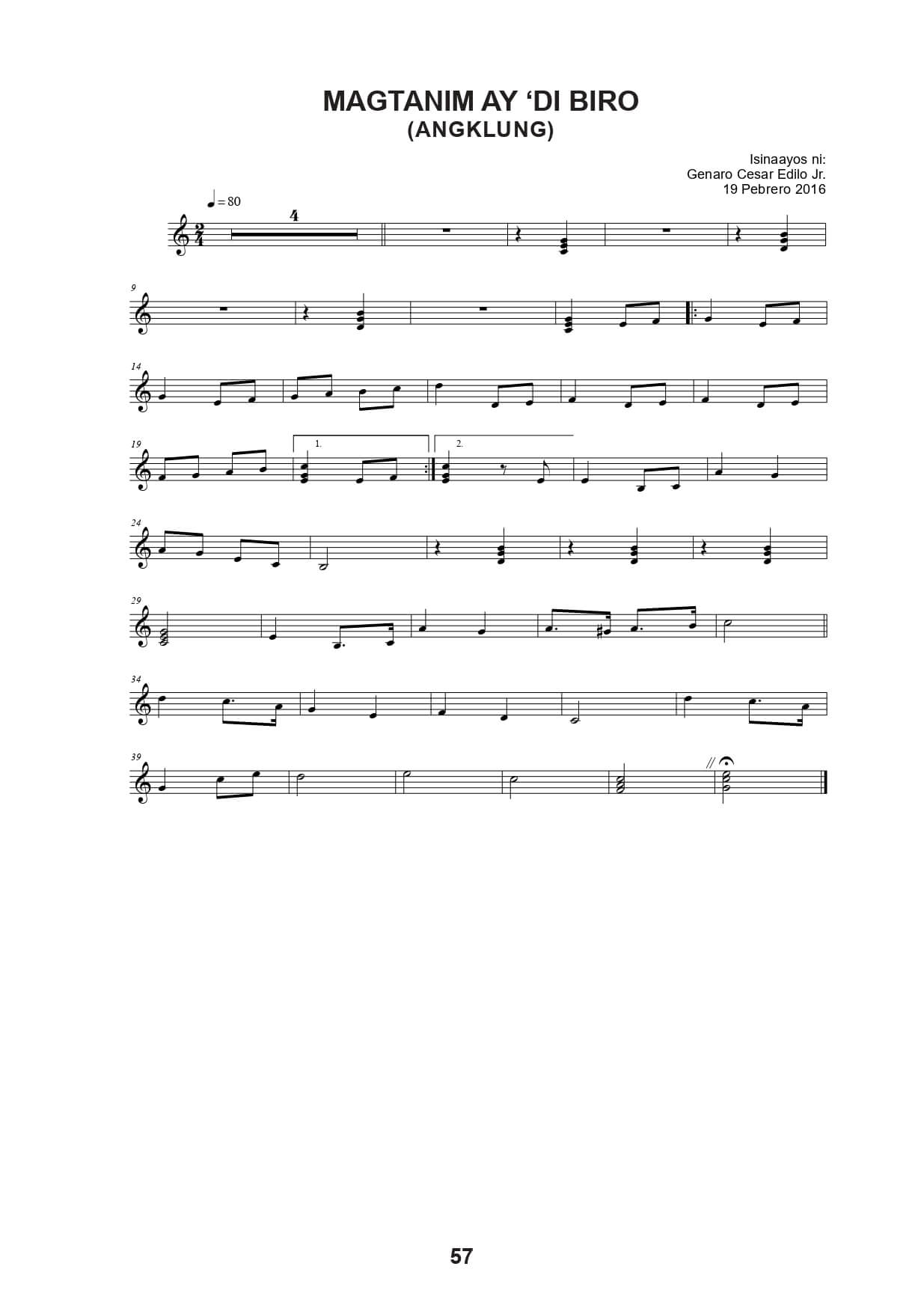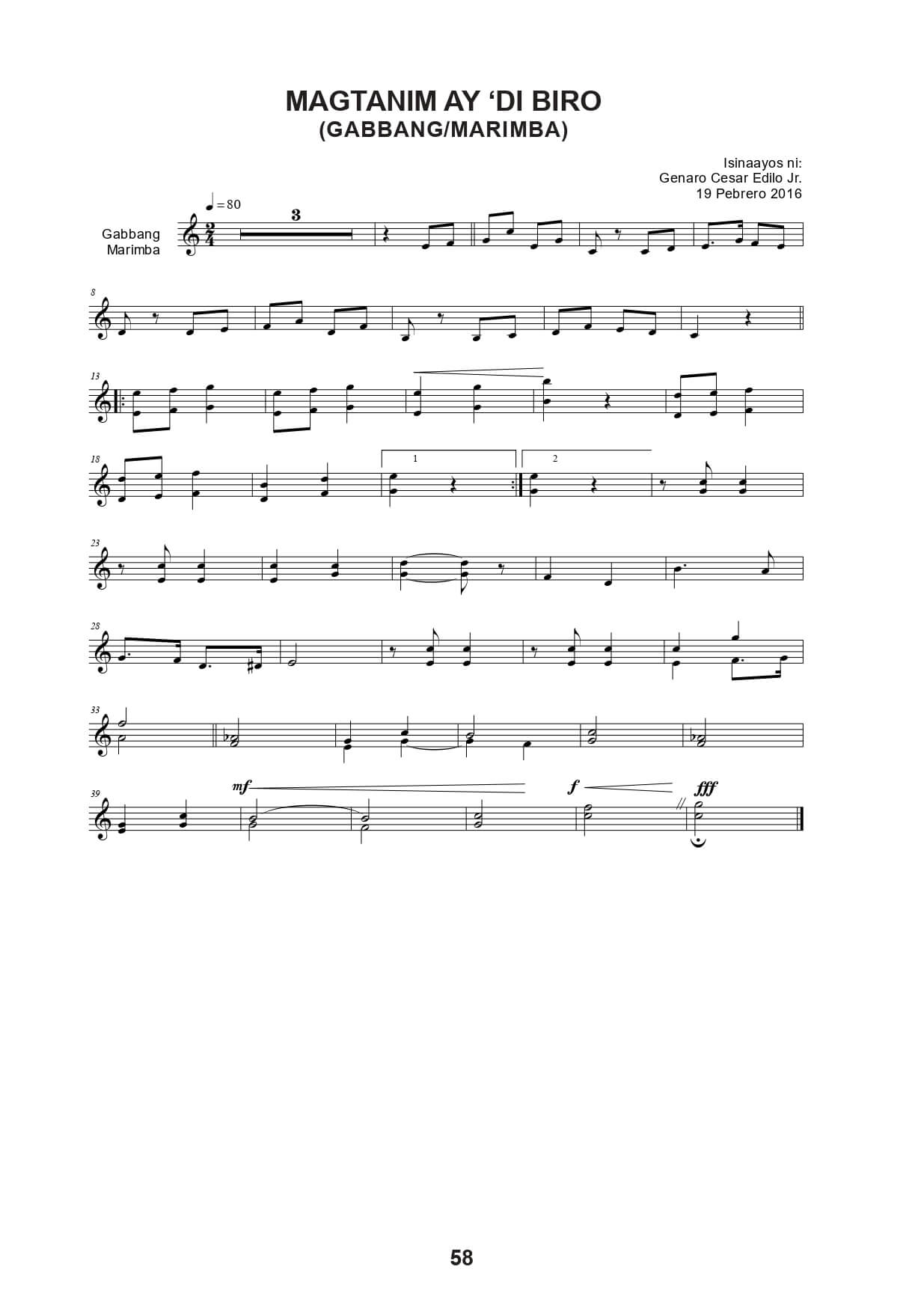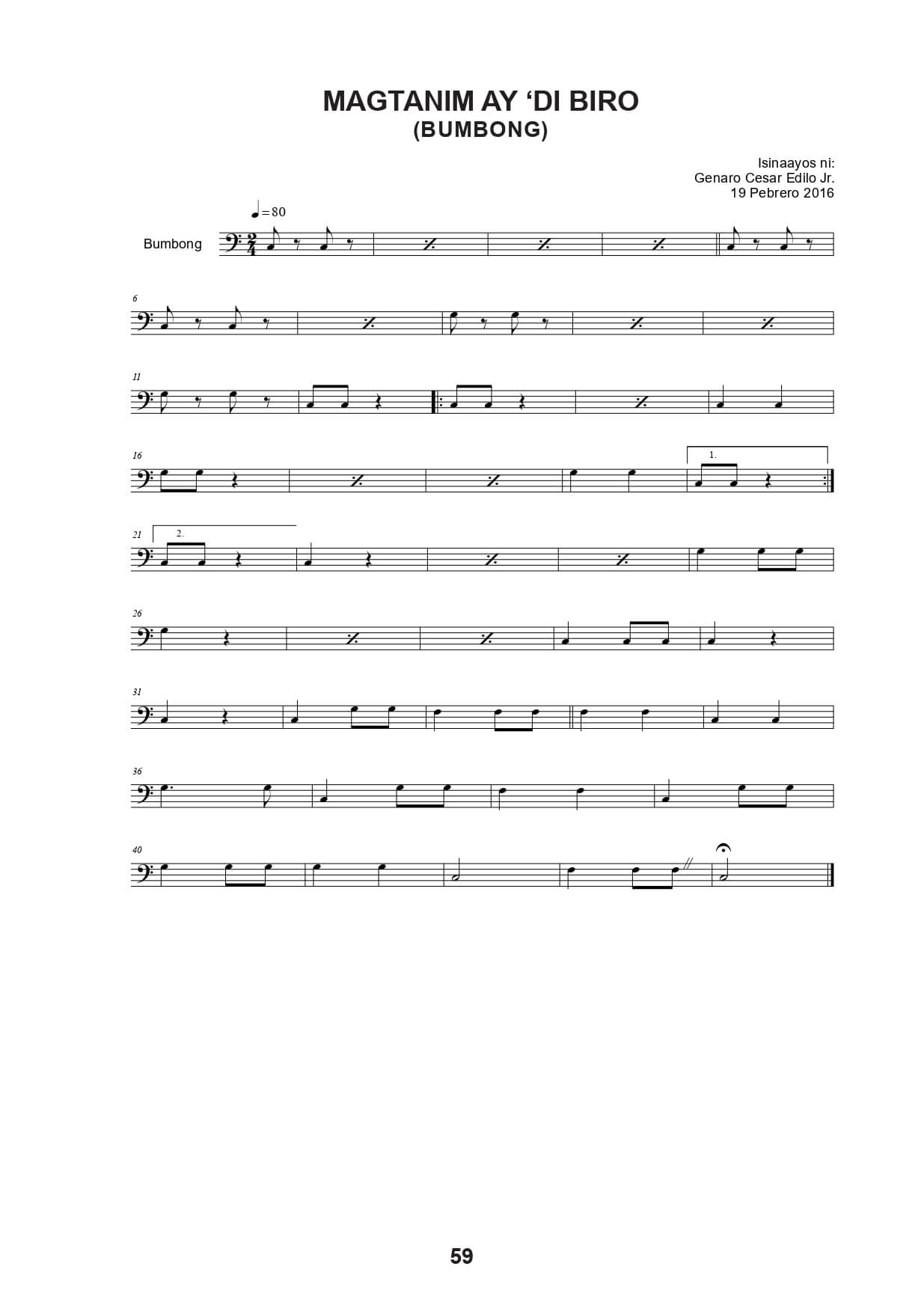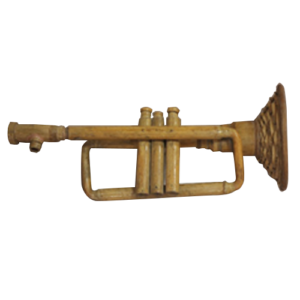Elementary Module
MAGTANIM AY ‘DI BIRO REHEARSAL PLAN
- Volume 2
Background
Description: Tagalog Folk Song
Arranger: Genaro Cesar Edilo Jr., November 2015
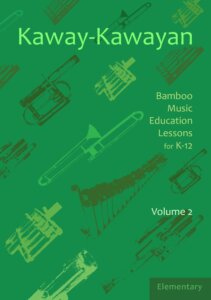
Tagalog Lyrics
Magtanim ay ‘di biro Maghapong nakayuko ‘Di man lang makaupo ‘Di man lang makatayo.
Braso ko’y namamanhid Baywang ko’y nangangawit Binti ko’y namimitig
Sa pagkababad sa tubig.
Sa umagang paggising Ang lahat iisipin
Kung saan may patanim May masarap na pagkain.
Braso ko’y namamanhid Baywang ko’y nangangawit Binti ko’y namimitig
Sa pagkababad sa tubig.
Halina, halina, mga kaliyag Tayo’y magsipag unat-unat Magpanibago tayo ng landas Para sa araw ng bukas
Para sa araw ng bukas.
“Magtanim Ay ‘Di Biro” (Planting is Never Fun) is a popular folk song composed by Felipe de Leon. The song talks about the hardship labor of a farmer while planting. The lyrics describe that a farmer has to bend over the entire day with no time to sit and no time to stand while he is on the fields. “Magtanim Ay ‘Di Biro” encourages the listeners to join in to keep the industrious spirit alive and to continue the hard work for a brighter future.
IV. PERFORMANCE GUIDE
A. MATERIALS
- Audio Tracks: Scan QR code on the right
- Sheet Music: Magtanim Ay ‘Di Biro arrangement by Genaro Cesar Edilo Jr.
B. GUIDE TO THE PIECE
The gabbang / marimba will begin its part on measure number 4. Counter melody will be played starting on measure 13.
The angklung will begin its part on measure number 6, then on measure number 12, angklung will play the melody.
The guitar will first play measure number 1 until measure number 11, the right hand will tap the strings while the left hand is placed on top of the fret of the guitar making a muted sound. Chords will be played starting on measure 12 following the rhythmic pattern while sustaining the tapping style.
The bumbong will have to play the same rhythmic pattern from measure number 1 until measure number 11. Which will change on measure number 12. The metronome mark given on this piece indicates that there are 80 quarter note beats per minute.
The first ending of the piece is placed on measure number 20 going back again to measure 13 playing until measure 19 then jumping to measure 21 on the second ending continue playing until measure number 44.
The first dynamics used in this piece is crescendo which is placed on measure 15. On measure 40 the piece should be played mezzo forte followed by crescendo until measure number 42 sustaining forte then followed immediately with crescendo on measure number 43 and ending the piece with a fortississimo.
V. REHEARSAL PLAN
| Time Allotment | Material | Instrument | Measures | Objective | Activity | Assessment | |
| 5
minutes |
Preparation of needed instruments
/ music stand / sheet music |
marimba gabbang guitar angklung rambong | Prepare the members to play the instrument. | Arrange the instruments needed for the piece. | The members of the group will determine the needed tools for the rehearsal. | ||
| 15
minutes |
Warm up
/ Note Reading / Solfege |
marimba gabbang guitar angklung rambong | Prepare the members to play the piece. | Play the legato, staccato etc. | The members of the group will
execute the correct technique in playing. |
||
| 25
minutes |
Magtanim Ay Di Biro | marimba gabbang | 4–44 | Recognize the rhythmic | Show skill in sight reading.
Demonstrate the clapping of the rhythmic pattern. |
The members of the group will | |
| patterns from | perform the correct | ||||||
| the song. | patterns. | ||||||
|
20 |
guitar | 1–44 | |||||
| minutes | |||||||
| 25
Minutes |
angklung | 12–44 | |||||
|
25 |
rambong | 1–44 | |||||
| minutes | |||||||
|
25 minutes |
By section | 1–11 | Show precision in playing each part assigned. | Play the assigned instrument. | Repeat playing each assigned part on the instrument as necessary. | ||
| Follow the given rhythmic pattern. | |||||||
| 20
minutes |
By section | 12–20 | Show precision in playing each part assigned. | Play the assigned instrument. | Repeat playing each assigned part on the instrument as necessary.. | ||
| Follow the given rhythmic pattern. | |||||||
| Observe crescendo in measure 15. | |||||||
| Observe the repeat marks
/ 1st and 2nd ending. |
| Time Allotment |
Material |
Instrument |
Measures |
Objective |
Activity |
Assessment |
| 20
minutes |
By section | 21–33 | Show precision in playing each part assigned.
Follow the given rhythmic pattern. |
Play the assigned instrument. | Repeat playing each assigned part on the instrument as necessary.. | |
| 20
minutes |
By section | 34–44 | Show precision in playing each part assigned. | Play the assigned instrument. | Repeat playing each assigned part on the instrument as necessary. | |
| Follow the given rhythmic pattern. | ||||||
| Observe mf to crescendo to forte to crescendo. | ||||||
| Observe caesura. | ||||||
| Play the piece that will end with fortississimo. | ||||||
| 30
minutes |
marimba gabbang guitar angklung rambong | 1–44 | Perform the piece from beginning to end without stopping.
Observe dynamics, tempo, and other musical marks on the piece. |
Show attentiveness in playing their parts.
Follow the conductor’s signal.
Show proper execution of dynamics. |
The members must make sure that all instruments are heard. The sound produced must be balanced for all instruments to be heard.If one cannot hear the other instruments played, it means one is playing very loud. |
No content.
No content.
No content.
No content.
No content.
No content.
Science in a creative industry.
The DOST-FPRDI has a Bamboo Musical Instruments Innovation R&D program aimed at improving the quality of locally-made bamboo musical instruments (BMIs) through science and innovative technologies. The program seeks to standardize the production of selected BMIs, develop prototype designs, analyze raw material sources and existing markets, and build a BMI processing facility. In addition, the program aims to document the ethnocultural story behind several BMIs and identify the bamboo species used in BMI production to promote public awareness and appreciation of the cultural importance of these musical instruments. The program is a collaboration with the University of the Philippines and Philippine Normal University for teaching modules and analyzing sound quality and standardization of BMI design. The DOST Grants-in-Aid program provides funding.
PhBMI


